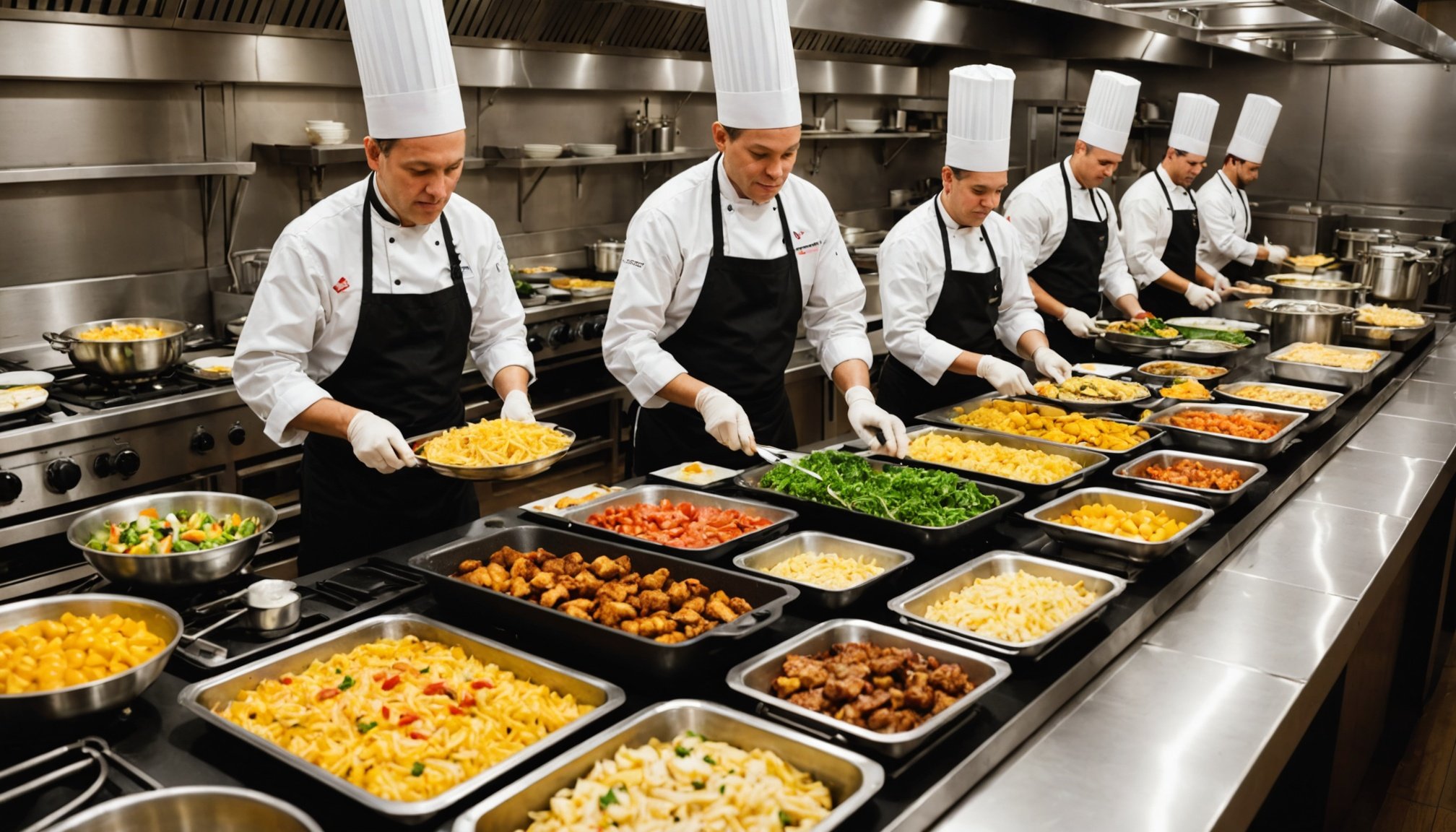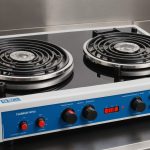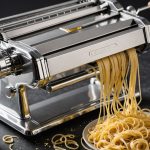Creating an enticing live cooking station can transform your buffet restaurant into a culinary destination. It captivates guests, enhances their dining experience, and encourages them to return. With the right setup, ingredients, and techniques, you can turn this space into a vivid performance that showcases your chefs’ talents. Explore innovative ideas, practical strategies, and tips to engage your audience, ensuring they not only enjoy delicious food but also the art behind its preparation. Embrace this opportunity to elevate your buffet and create unforgettable moments for your patrons.
Understanding Live Cooking Stations
Live cooking stations are a dynamic addition to buffet restaurant concepts, captivating guests with their interactive appeal. These stations offer a unique dining experience where chefs prepare dishes in real-time, allowing customers to witness the culinary process and engage directly with the chefs. This not only enhances the dining experience but also builds a connection between the diners and the restaurant.
This might interest you : Unlock the benefits of using reclaimed materials for your restaurant”s interior design makeover
The benefits of incorporating live cooking stations in buffet restaurants are manifold. Firstly, they significantly boost customer engagement by allowing diners to customise their meals according to personal preferences. This interactive element can make the dining experience more memorable and enjoyable. Additionally, live cooking stations can showcase the restaurant's commitment to freshness and quality, as guests can see the ingredients and cooking techniques used.
Key elements that contribute to a successful live cooking station include a well-thought-out layout that allows for smooth interaction between chefs and guests. The selection of dishes should be diverse yet manageable, ensuring a wide appeal while maintaining quality. Adequate staffing is crucial to ensure efficiency and maintain a high level of service. By focusing on these aspects, buffet restaurants can leverage live cooking stations to enhance their offerings and elevate the overall dining experience.
Also to see : Essential Factors to Keep in Mind When Crafting a Sustainable Restaurant Design
Designing Your Live Cooking Station
Creating an engaging and efficient live cooking station involves careful station design and layout planning. The primary factors to consider include the station's location within the restaurant, ensuring it is easily accessible yet not obstructive. The flow should allow diners to move seamlessly around the station without congestion, enhancing the overall dining experience.
Visual appeal plays a crucial role in attracting guests to the live cooking station. Aesthetically pleasing designs, incorporating vibrant colours and stylish equipment, can draw attention and create excitement. The station should showcase ingredients and cooking techniques clearly, allowing diners to appreciate the culinary artistry.
Optimising space and flow is essential for maintaining efficiency. Here are some tips:
- Compact equipment: Use multifunctional appliances to save space.
- Clear signage: Guide diners effectively to prevent confusion.
- Strategic layout: Position ingredients and utensils within easy reach for chefs to streamline the cooking process.
By focusing on these aspects, restaurants can ensure their live cooking stations not only captivate guests but also operate smoothly. This thoughtful approach to design and layout can significantly elevate the dining experience, making it both memorable and enjoyable.
Selecting Equipment and Tools
Choosing the right cooking equipment and kitchen tools is crucial for a successful live cooking station. The equipment should be versatile to accommodate various cuisines, ensuring the station can cater to diverse tastes. For instance, a teppanyaki grill is ideal for Asian-inspired dishes, while a pasta cooker is essential for Italian cuisine. These buffet essentials can enhance the dining experience by offering a wide range of freshly prepared options.
Must-have kitchen tools include high-quality knives, tongs, and spatulas, which are indispensable for efficient cooking. These tools should be durable and easy to handle, allowing chefs to perform tasks swiftly and safely. Additionally, investing in clear, well-labelled containers for ingredients ensures organisation and speed during meal preparation.
When considering budget-friendly options, look for multifunctional appliances that offer flexibility without compromising quality. For example, a combination oven can roast, bake, and steam, reducing the need for multiple devices. However, for those seeking high-quality alternatives, brands known for their reliability and performance might be worth the investment, as they often offer greater longevity and efficiency.
By carefully selecting the right equipment and tools, restaurants can create an engaging and efficient live cooking experience.
Ingredient Selection and Preparation
Choosing fresh ingredients is critical for a successful live cooking station. High-quality ingredients not only enhance the flavour but also demonstrate a commitment to excellence. Sourcing locally can ensure freshness and support community producers, creating a unique selling point for your buffet.
Menu planning is another vital aspect. Consider dishes that showcase the freshness and versatility of your ingredients. For example, a stir-fry station allows for a variety of vegetables and proteins, catering to diverse dietary preferences. Incorporating seasonal items can keep the menu exciting and relevant.
Effective preparation tips can significantly impact the dining experience. Prioritise mise en place, where ingredients are prepped and organised before service, ensuring chefs can work efficiently. This technique not only saves time but also maintains the quality and freshness of the dishes. Additionally, use appropriate storage methods to preserve the integrity of ingredients until they are needed.
By focusing on these elements, live cooking stations can deliver a memorable dining experience, highlighting the freshness and quality of the ingredients used. This approach not only satisfies diners but also elevates the restaurant's reputation for offering exceptional cuisine.
Presentation Techniques for Live Cooking
Incorporating creative plating techniques can significantly elevate the visual appeal of dishes at live cooking stations. By focusing on the art of food presentation, chefs can transform a simple meal into an unforgettable experience. This involves arranging food in a way that is not only aesthetically pleasing but also highlights the dish's flavours and textures.
One effective strategy is to use garnishes and accompaniments that complement the main ingredients. These can add both flavour and a pop of colour, enhancing the overall presentation. For instance, a sprig of fresh herbs or a drizzle of sauce can make a dish more enticing. Additionally, incorporating edible flowers or microgreens can provide a delicate touch that captivates diners.
Different cuisines offer unique opportunities for appealing presentations. For example, Japanese cuisine often emphasises minimalism and precision, with sushi and sashimi arranged neatly to showcase their freshness. In contrast, Italian dishes might use rustic plating, with a focus on hearty, vibrant ingredients like tomatoes and basil.
By mastering these techniques, chefs can ensure that each dish not only tastes delicious but also delights the eyes, creating a memorable dining experience that resonates with guests.
Service Strategies for Customer Engagement
Fostering meaningful customer interaction is pivotal in live cooking stations. Chefs play a crucial role in this, using their culinary expertise to engage diners. One effective service technique is storytelling, where chefs share the origins and inspiration behind each dish. This not only entertains but also educates, creating a deeper connection with guests.
Engagement strategies can be further enhanced by encouraging diners to participate in the cooking process. Allowing customers to choose ingredients or suggest cooking methods makes the experience more interactive and personalised. This level of involvement can transform a simple meal into a memorable culinary journey.
Training staff is essential for optimal service delivery. Chefs and servers should be adept at reading customer cues, adjusting their approach to suit individual preferences. This includes being attentive without being intrusive, ensuring diners feel valued and respected.
To maintain high standards, regular training sessions can help staff refine their skills and stay updated with the latest trends in customer service. By focusing on these strategies, restaurants can not only improve customer satisfaction but also build a loyal clientele that appreciates the unique experience offered by live cooking stations.
Creating a Captivating Ambiance
A well-crafted restaurant ambiance significantly enhances the overall customer experience, especially in settings with live cooking stations. The atmosphere design should seamlessly integrate elements that make guests feel welcomed and engaged.
Lighting is a crucial factor. It should be adaptable to different times of the day, with softer tones for a relaxed evening and brighter settings for lively lunch hours. The right lighting can highlight the action at live cooking stations, drawing diners' attention to the culinary artistry.
Music plays a subtle yet powerful role in shaping the ambiance. Choosing a playlist that complements the restaurant's theme can elevate the dining experience. For instance, gentle jazz might suit a sophisticated setting, while upbeat tunes could enhance a more casual atmosphere.
Decor is another vital component. Thoughtful decor that reflects the restaurant's identity can create a memorable visual experience. Elements like artwork, plants, or themed decorations can add character and charm.
By carefully considering these aspects, restaurants can create an ambiance that not only enhances the live cooking experience but also leaves a lasting impression on diners, encouraging them to return for more.
Addressing Challenges and Solutions
Running live cooking stations presents several operational challenges that require effective problem-solving strategies. One common issue is managing the flow of diners during peak hours. To overcome this, consider implementing a reservation system or staggered seating to control crowding. This approach ensures a smoother experience for both guests and staff.
Another challenge is maintaining ingredient freshness and availability. To tackle this, establish a reliable supply chain and consider using local suppliers to reduce delays. Regularly updating inventory systems can also prevent shortages and keep the station well-stocked.
Ensuring efficient service during busy times is crucial. Efficiency tips include training staff to multitask and prioritise tasks effectively. For instance, chefs can pre-prepare certain components of dishes to speed up service without compromising quality. Additionally, clear communication between kitchen and floor staff can prevent bottlenecks and enhance coordination.
Equipment malfunctions can disrupt operations significantly. Regular maintenance checks and having backup equipment ready can mitigate such issues. Investing in high-quality, durable appliances reduces the likelihood of breakdowns, ensuring consistent service.
By addressing these challenges with practical solutions, live cooking stations can operate smoothly, providing an enjoyable and efficient dining experience for all guests.











